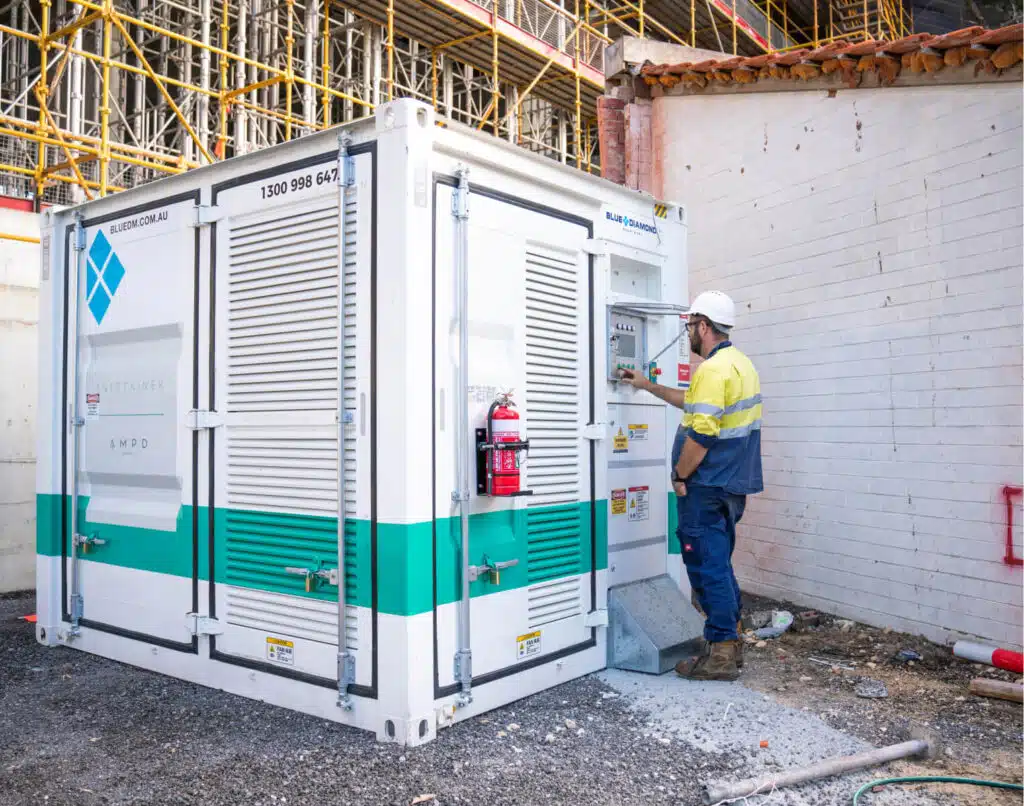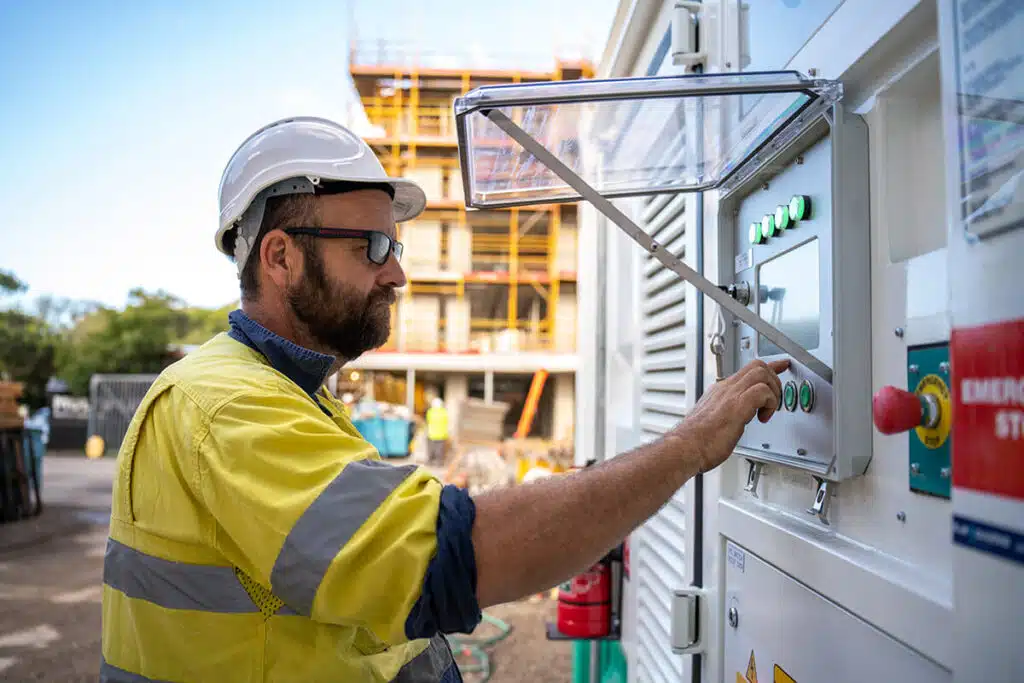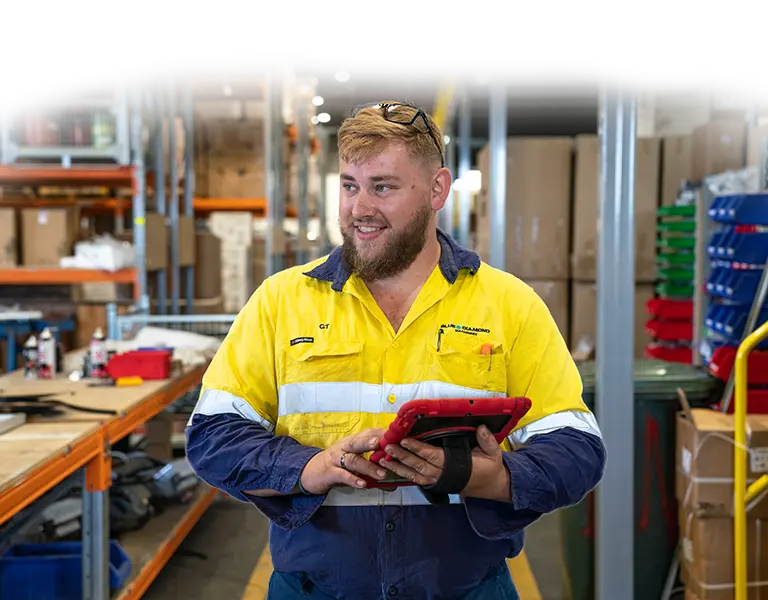Despite its name, Battery ESS have many moving parts to encompass a full solution for construction projects. It’s primarily driven by software with an easy-to-use, plug-and-play set-up for user convenience while providing key insights into its overall performance. Its primary components include:
- An advanced battery system using lithium-ion batteries with automatic charging and discharging functionality
- Inverters and transcoders
- Electric controllers and a software management system with remote service functionality
- A fire suppression system
- An air conditioner
Together, the unit not only accomplishes power demands but also solves common challenges faced by worksites. Collectively, this ensures a stable connection with even the most demanding loads and productive energy storage, drastically reduces diesel costs and eliminates disruption and noise pollution. Notably, in the case of AMPD’s Enertainer unit, it’s about 32x quieter than your average diesel generator.



